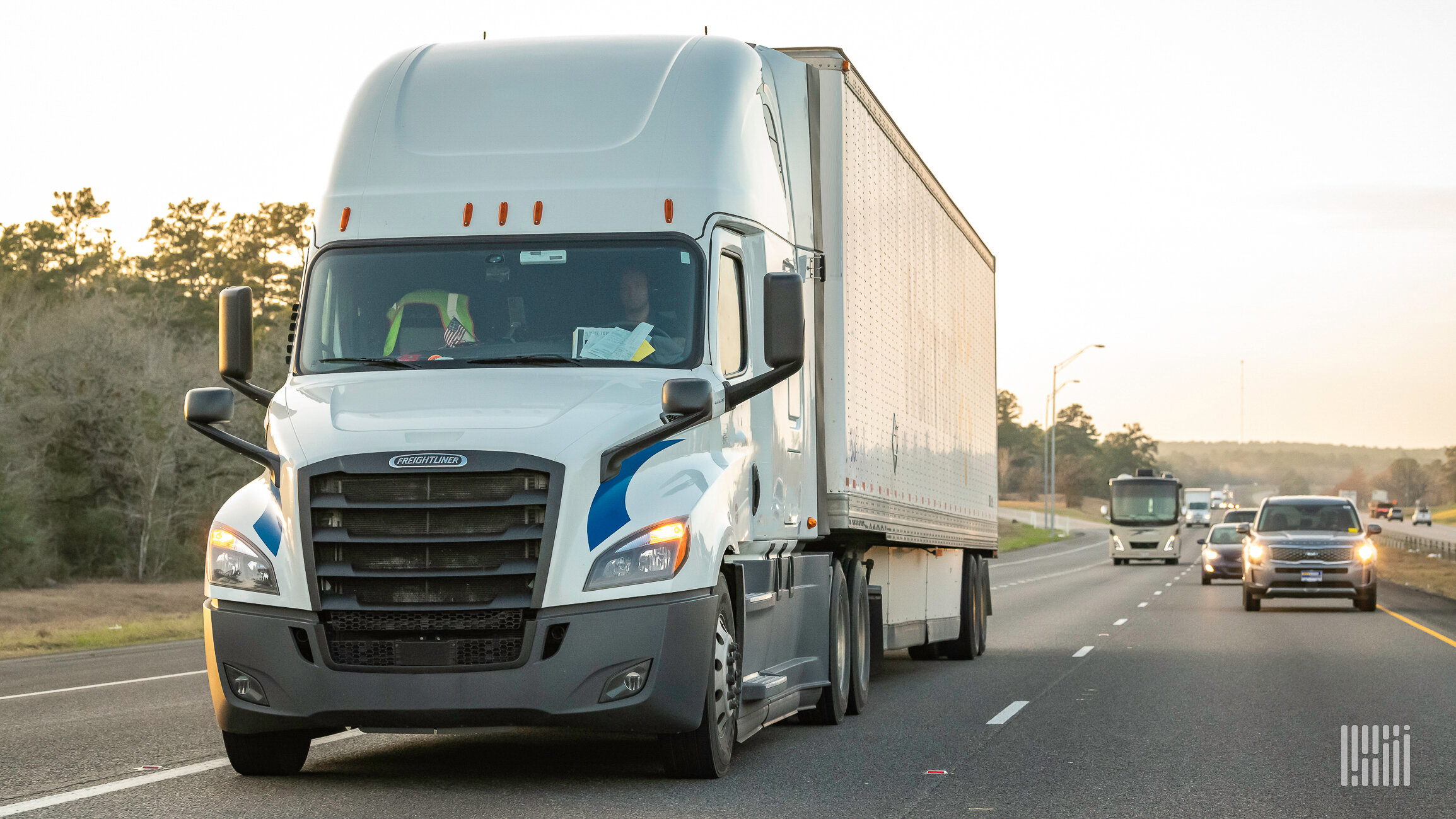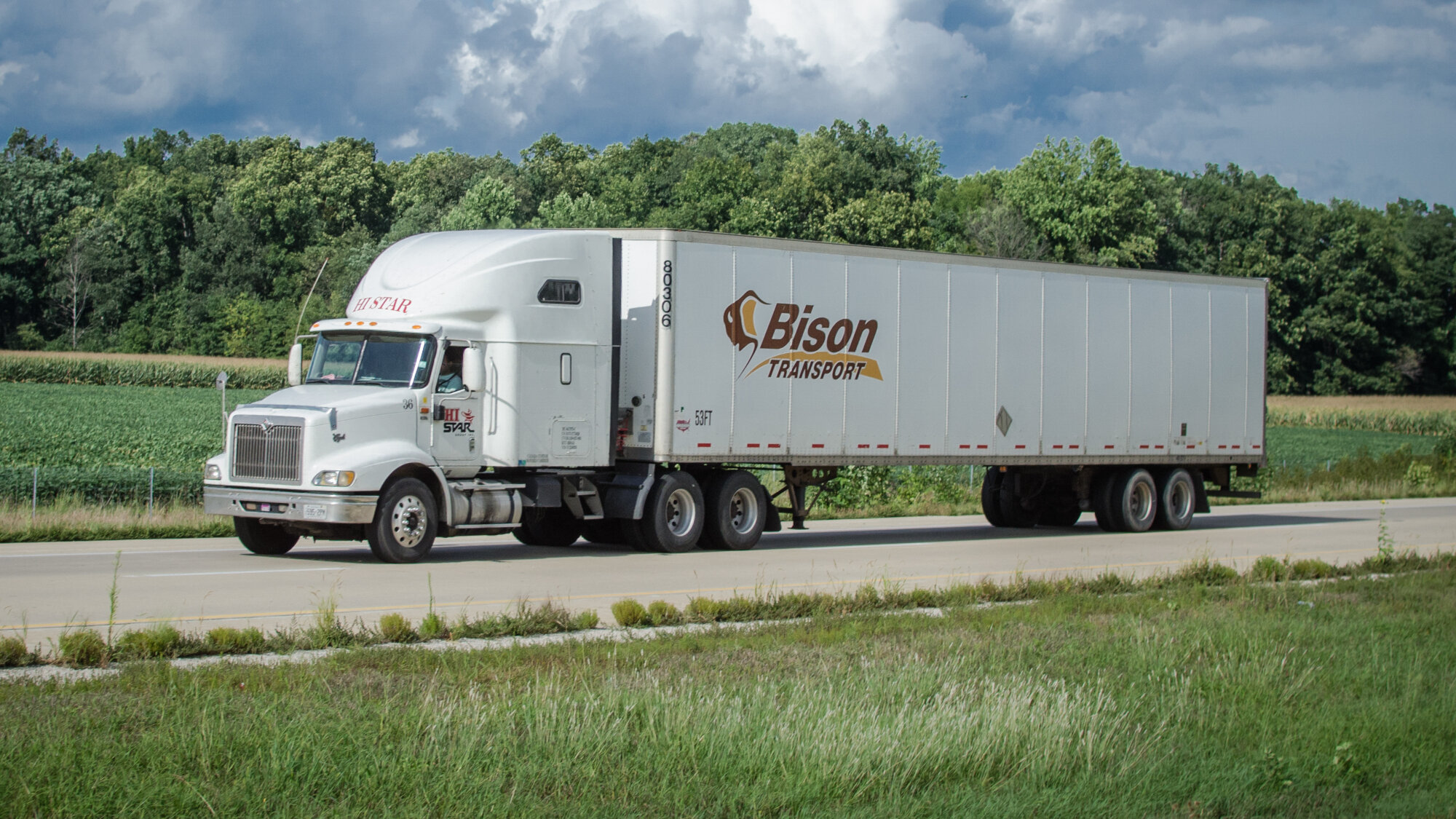
Image: Josh Roden/FreightWaves
Women are underrepresented across the board in transportation and logistics, with just over 20 percent of managers in transportation, storage and distribution identifying as female. Women also make up a staggeringly small percentage of truck drivers, coming in at under 8 percent, according to the Women in Trucking Association Index.
While the disparity tends to be wider in the transportation industry, men outnumber women in both middle management and executive roles in most industries. Women who work in male-dominated spaces often experience a certain amount of dissonance throughout their careers.
“Women make decisions differently than men,” Women In Trucking President and CEO Ellen Voie said. “Men will narrow the options down and make the fastest decision. Women will expand the options and investigate each one. In the male-dominated space, that different way of looking at things may not always be valued.”
Voie participated in a Transparency19 panel alongside Allison Robinson, CEO of The Mom Project and Blythe Brumleve, founder of Digital Dispatch and Brumleve Brands.The panel, dubbed “The Female Factor: How Can It Help Reshape The Industry?,” was moderated by FreightWaves Chief Marketing Officer Lisa McGinty.
Women aiming for leadership positions may encounter roadblocks throughout their careers, but one of the biggest hurdles women face is learning to juggle the corporate world and the challenges of caregiving if they decide to have children.
Robinson faced that hurdle head-on after her son was born in 2015. It was that experience that drove her to create The Mom Project, which works to tackle the issue on a nationwide scale, building a better workplace for women while providing talent solutions that help customers attract and retain a diverse workforce.
“Women are entering the workforce at a slightly higher rate than men,” Robinson said. “As many women are building families, that comes with a lot of responsibilities outside the workplace. We aren’t always set-up structurally to allow women to live their lives outside the workplace.”
Robinson noted that the drop-off of women in the workforce tends to happen at the management level, an observation consistent with the mid-career breaks women may take to raise a family.
When it comes to retaining women and helping them move through the ranks, respect, flexibility and intentionality are the key concerns, according to Robinson. Companies should foster a culture that is genuinely respectful of women. They should be flexible and open to people from many different life stages and backgrounds during the hiring process, and they should be intentional in supporting women.
Companies have plenty to gain from welcoming women into their ranks. A 2016 study by the Peterson Institute for International Economics analyzed 21,980 firms from 91 countries. The study found that the presence of women in corporate leadership positions may improve firm performance, along with bolstering the company in other ways.
“Women’s presence in corporate leadership is positively correlated with firm characteristics such as size, as well as national characteristics such as girls’ math scores, the absence of discriminatory attitudes toward female executives and the availability of paternal leave,” the study reads. “The results find no impact of board gender quotas on firm performance, but they suggest that the payoffs of policies that facilitate women rising through the corporate ranks more broadly could be significant.”
Robinson noted that, for some women, going back to work full-time while raising small children is not a realistic option because the cost of childcare can quickly become prohibitive for someone earning a mid-range salary. However, companies can still benefit from the skills and insights of these women by offering freelance and project-based opportunities.
While a great number of companies will have to focus on changing their cultures in order to retain female talent, Brumleve pointed out that some women are starting their own businesses where space is being carved out for women from the start.
“I would love to see more women propping other women up and acting in a more collaborative mindset,” Brumleve said. “If the opportunity isn’t there, seeing the opportunity and investing yourself can go a long way.”
In trucking specifically, getting more women in the driver’s seat may be a matter of messaging, according to Voie.
“Women don’t know they’re valued and wanted in the trucking industry,” Voie said. “We need to let women know they are desired in this industry, whether they’re driving a truck or leading a company. If your ads aren’t showing women, women don’t perceive they can do the job.”
All three women on the panel were optimistic about women’s role in the workplace moving forward.
“I am optimistic that company and public leaders will wake up to how valuable women are,” Robinson said. “I think there will be exciting changes on the policy front and really good changes happening inside companies.”





















